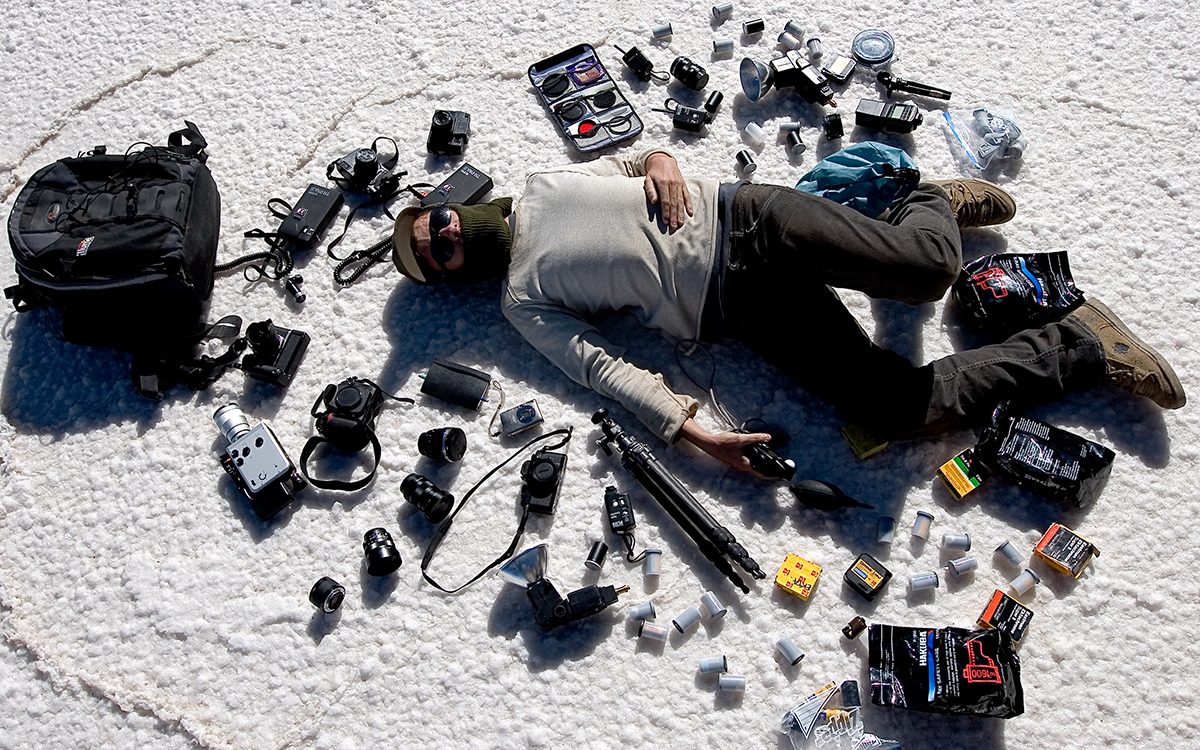
Everything he touches turn into gold. From the Menikmati to the Flip’s Sorry, or the Cliché’s opus. Fred is literally what the word creative means. And now he’s doing it again with his photographies from all over the world. Nobody can’t stop French Fred.
Tell me your ID, and your skate background?
Fred Mortagne, 41, Lyon, France.
First board was plastic, only for downhill sit on, it was 33 years ago!
Your photography background?
I’ve bought a FM2 camera during 2001, I’m an autodidact.
When did you realized that you would take pictures?
It came from the frustration during sesh to imagine, visualize possible pictures, that the other photographers didn’t shoot, cause they just didn’t «see» these. And travelling a lot, i’ve felt to do some visual souvenir, and not just skateboarding tricks on video.
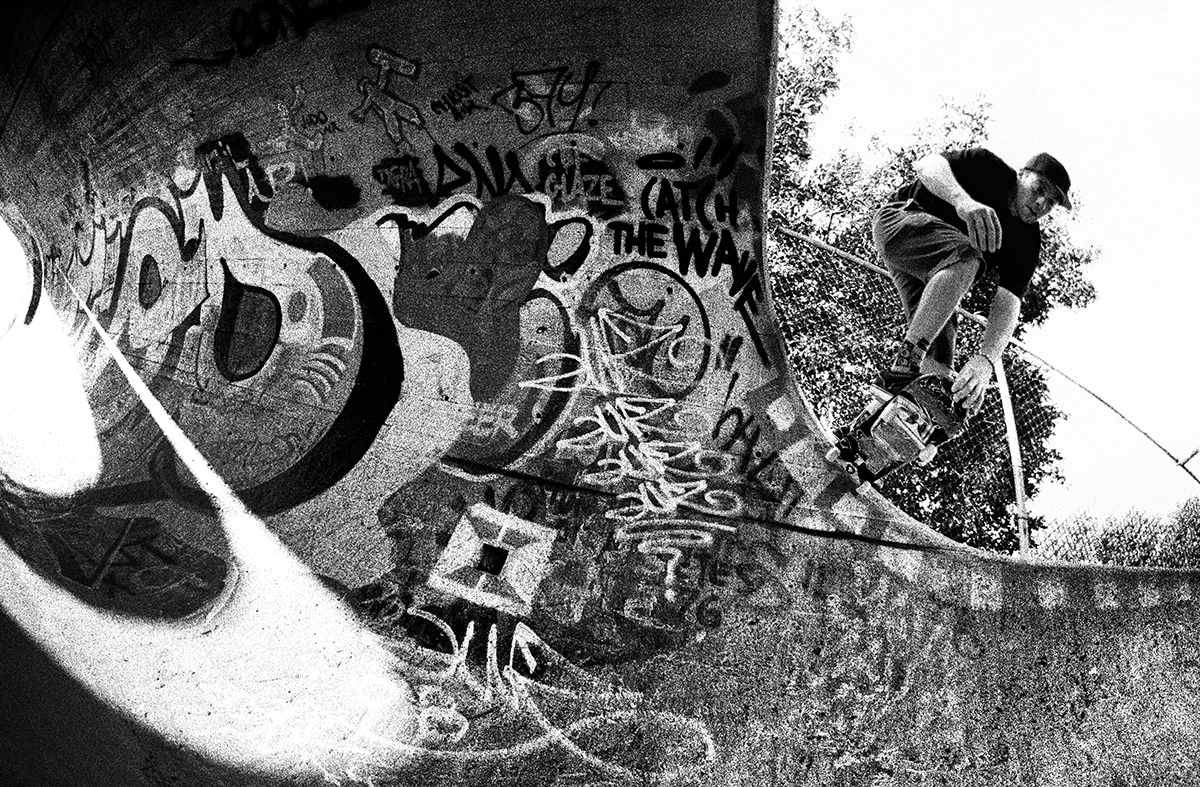
Marc Tison / Backside TailCrail Slide up the lip, Montreal
Where your inspiration come from?
From everywhere. There is inspiration in everything, good and bad..
In skateboarding, I’ve always loved Daniel Harold Sturt’s work, in video or photography. He started as a filmer too.
I had no reference or photography culture back then. I’ve develloped my own style, I’ve been to artshow, read books, and I’ve discovered huge photographers who had style that talked to me and were closed from what I’ve done. I loved pictures from people like Koudelka, Depardon, Cartier-Bresson, Burk Uzzle, Berengo-Gardin,Titarenko, the old ones! I’m less sensitive to modern style pictures .
What was the first and last gear you’ve bought?
My first camera, was a compact Yashika T5. It was just for travelling, and I’ve been quickly tired of it, cause there was no manual control. Then I’ve bought a Nikon FM2 after some advices, I don’t need the last gear from the market.
It’s not something that I’m looking for. I’ve also bought an Hasselblad Xpan too, but I didn’t use it much, and it broke 2 times, it’s too expensive to fix it. My last bought was few lens from Zeiss for Nikon, and I’m very happy of it.
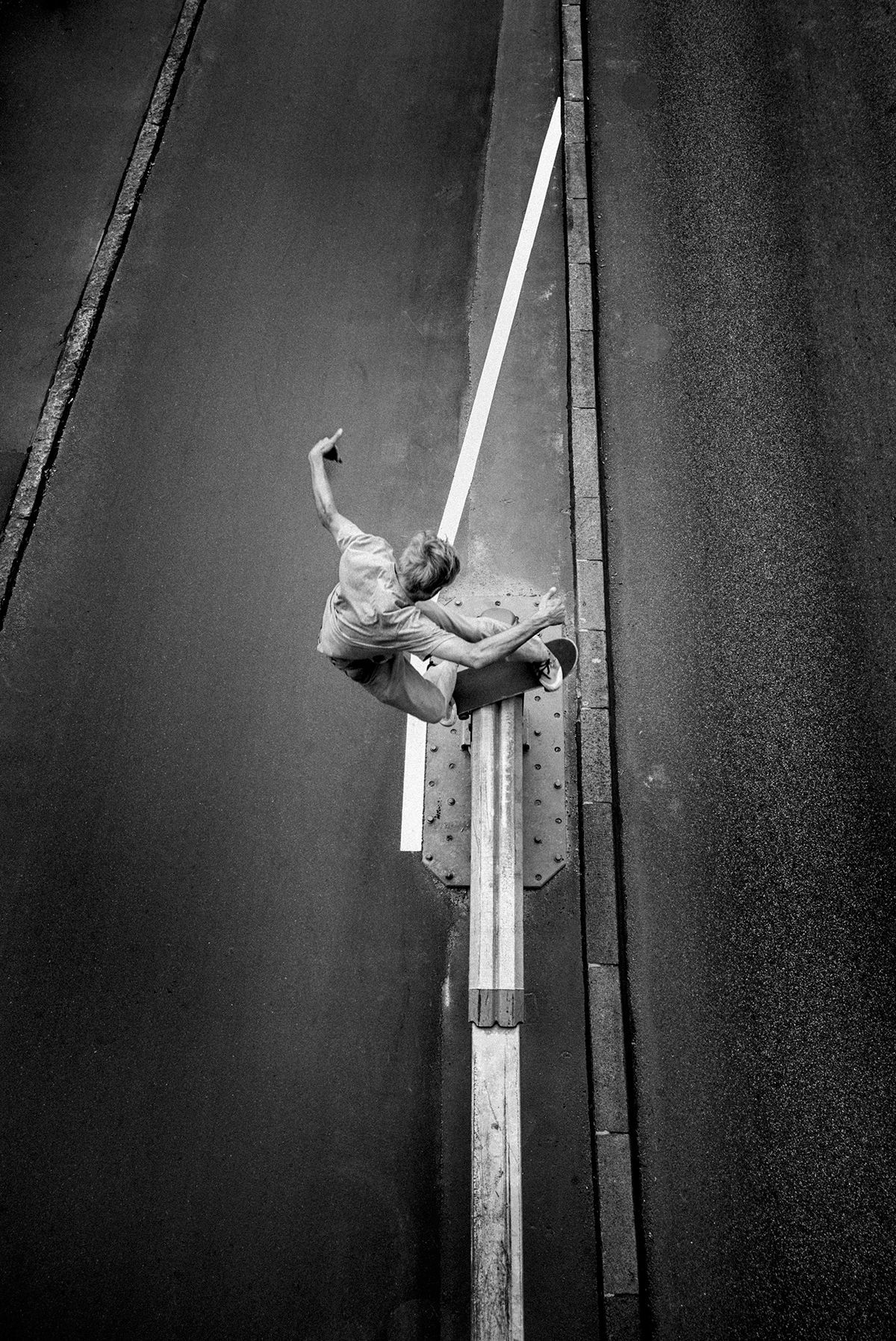
Madars Apse / Frontside Boardslide, Copenhagen
Do you write, think and prepare your shots?
I go with the flow, I have a documentary approach, I feel more comfortable to start with reality, than invent something A to Z.
What are the good and bad sides from this passion?
The boring thing to do, the go and return to the lab, scanning, etc, tasks that doesn’t ask creativity. And doing archives in digital.
3 things you love about photography?
Giving an timeless look to pictures. Every time I discover a new roll of film, I’m like a kid. Producing nice memory.
3 things you don’t like about photography?
The price of the gear. The weight of my backpack. The copycat photographers, when someone doing something cool, mags publish that trend over and over, Its boring. Same in the skate videos.
«There is inspiration in everything, good and bad»
Roughly speaking, what’s your annual earning from photography?
Honestly I don’t know, cause I’m not doing it full time, I do a lot of video in parallel, its not constant. Its changing a lot from year to year, I’m not rich anyway, some years I’ve spent more that I have earn, but I see it like an investment, hopefully in years later some pictures would be more valued.
From your own work, what are you favorites pieces?
The one from Ali Boulala, where he is jumping on the windows. The silhouette kickflip from Lucas Puig. And many that are not linked to skateboarding.
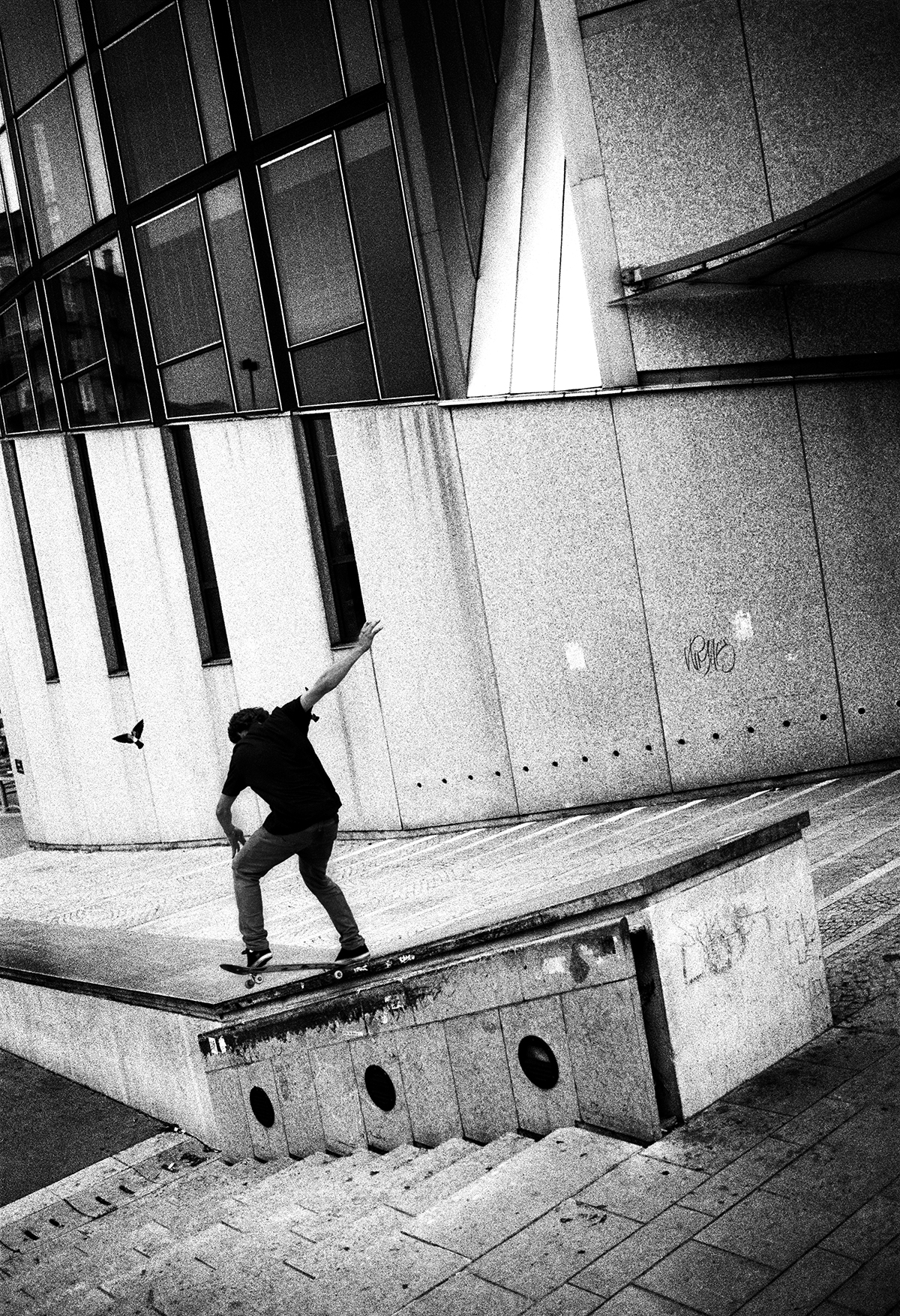
Andrew Brophy / Frontside Tailslide, Lyon
You’ve published your first book, a retrospective from your work, it has been sold out and you are on a second printing. How it all started?
It’s been a few years since I had that idea of a book, but I was waiting for the right time, without knowing when it would be! One day Thomas Campbell called me to do my first book, and I knew right away it was time, even if I would never ask
Thomas to do a book about me. I was honored that he made that proposition, and I knew that with him, it would be perfect. The book has been appreciated, and we would never though that it would be sold out after 4 months. We were expecting this not before 3 years at least. The feedback has been really positive from in and out skateboarding, more than I would imagine. With my work, I’m trying to open skateboarding to a larger public.
And its working, during my exhibitions, people who aren’t related to skateboarding are fascinated by my pictures, and I love it. Part of my approach is to discover the richness and interest of skateboarding, to overcome the negative clichés on which the outside world can focus. I’m happy to get people’s attention and curiosity, and to convey positive emotions about the skateboard that I love so much and that has transformed my life for the better.
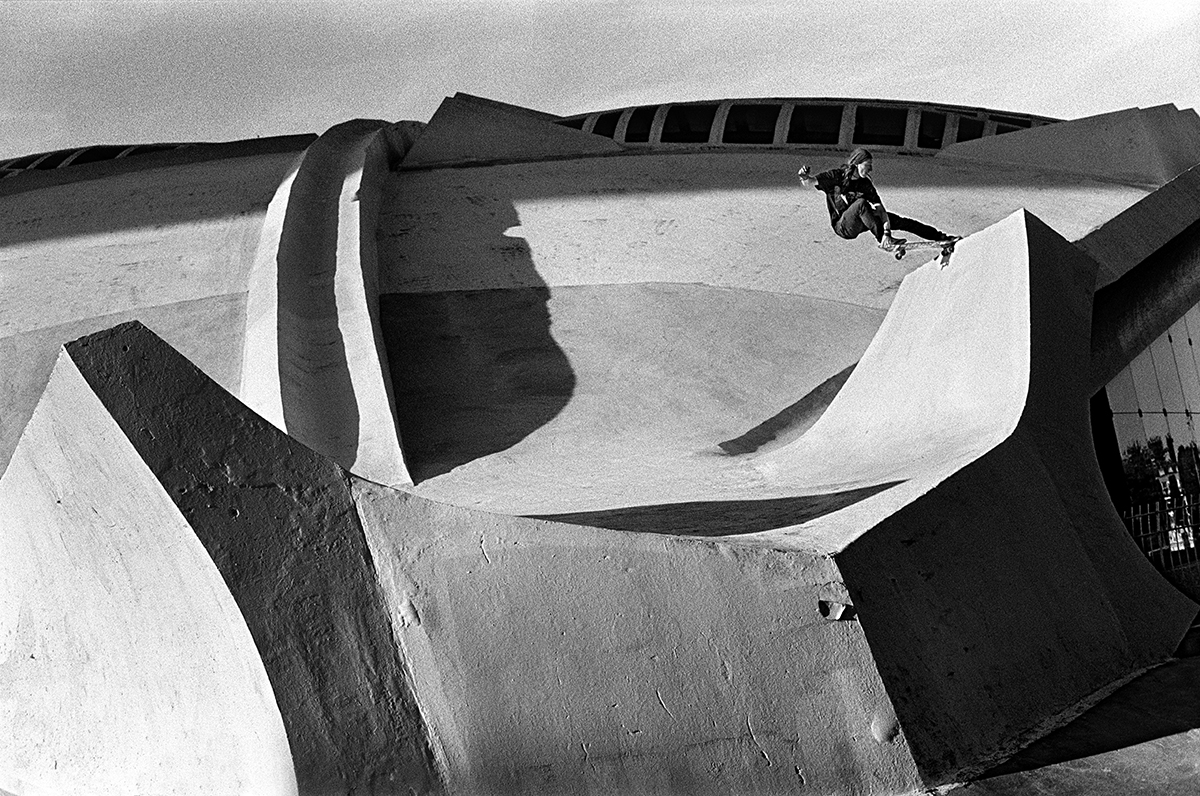
Riley Boland, Frontside Crail Tailslide, Montreal
Few years ago, you told me you were shooting 85% on film, and trying to not get over 15% on digital, that is still the case?
It has completly changed! Till 2013 I was a big defender of the film. I did an exhibition in 2007 called « One Foot In The Grave » where I was burning negatives, to materialize the rough time film was into. I presented this work in 2008 in Montreal and Vancouver. Ideally I would have liked to remain decided on film, especially since the digital really did not excite me at all.
But in 2013, I was offered to shoot with a Leica for 3 months, a digital, the M Monochrom, wich takes only black and white pictures. I was honored, but I was worried about shooting and being able to mix these images with my film photos, because my work unfolds in the long term … since my beginnings I remain on the same aesthetic line. I could have this continuity altered. But I was instantly amazed by the quality of the device, which had absolutely nothing to do with digital that I used until then.
I was more under the impression of having in my hands an hybrid machine between film and digital, and so, finally, no problem to mix these new images with others, even my oldest ones.
As I was in direct contact with Leica, I shot as much as possible in the time that was imparted to show them my photographic potential. This strategy paid off,
because my collaboration with them continues currently. Since 2013, I shoot 95% in digital since our collaboration is based on the use of their new generation devices, and this allowed me to progress faster than ever, especially since I was late in photo, since it has always been a kind of hobby aside from my work as a director. At the moment I reversed the steam and devotes mostly to the photo. I still bought an M6, and it’s good to shoot in film! It remains an unique experience, which I miss. I would be more intimately acquainted with the film later, but the compromise I made was unavoidable, collaborating closely with Leica is something I never thought, even in my wildest and most ambitious dreams!
Leave a Reply